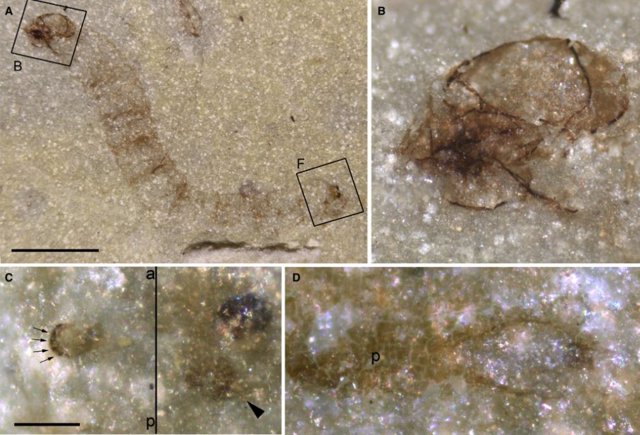March 10 () –
An international team of researchers has identified the fossil larva of diptera (a group of insects to which flies and mosquitoes belong). oldest on the planet247 million years old.
The specimen –of which the structure of the head, some parts of the digestive system and its respiratory system are preserved– It was found a few years ago near the small port of Estellencs, in the northwest of the island of Mallorca.and now it has been studied using the latest techniques.
The Spanish Geological and Mining Institute (IGME-CSIC), the Museu Balear de Ciències Naturals (FJBS-MBCN), the National Museum of Natural History of the Sorbonne University (France) and the Museum of History have participated in the research. Natural from the University of Oxford (Great Britain). The work has been published in the journal Papers in Palaeontology.
The authors have described a new genus and species: Protoanisolarva juarezi or Juárez primordial anisopodoid larva, named in honor of Josep Juárez, a Mallorcan who discovered the fossil during some prospecting work. The complete larva, which predates even the earliest known dinosaurs, it had left a faint carbonaceous imprint on the two faces that were exposed when the rock opened up.
“While inspecting the fossil under the microscope, I put a drop of alcohol on top to increase the contrast of the different structures, and I was able to observe with fascination that it had preserved the external and internal structure of the head, some parts of the digestive system and, most importantly, , its respiratory system in the form of spiracles”Enrique Peñalver, CSIC researcher at the IGME-CSIC and lead author of the study, quoted by Eureka Alert.
Rafel Matamales Andreu, paleontologist at the Museu Balear de Ciències Naturals and another of the study’s authors, has spent several years unraveling the environment of this region of Mallorca during the Triassic, as well as the changes it underwent over millions of years. “If we could move to the beginning of the Triassic, we would see an area of great rivers and floodplains under a climate similar to what we find today in tropical Africa, alternating dry seasons with rainy ones“, indicates.
When the larva found fed on organic matter in the soil, not many millions of years ago one of the greatest mass extinctions in the history of life had occurred, ending the Permian period, that wiped out more than 80% of the planet’s species.
“Somehow, we have been able to observe a part of the adaptations to the post-apocalyptic environment of the early Triassic by the first known dipteran insects, for example, a respiration system that we can still observe in different groups of current insects“, points out Ricardo Pérez de la Fuente, another of the authors and a researcher at the Oxford Museum of Natural History.
Currently, the fossil is being conditioned at the Institut Català de Paleontologia Miquel Crusafont for its permanent custody in Mallorca.





![[Img #74676]](https://thelatestnews.world/wp-content/uploads/2024/12/Laser-artificial-neuron-150x150.jpg)







![[Img #74676]](https://thelatestnews.world/wp-content/uploads/2024/12/Laser-artificial-neuron-300x200.jpg)

